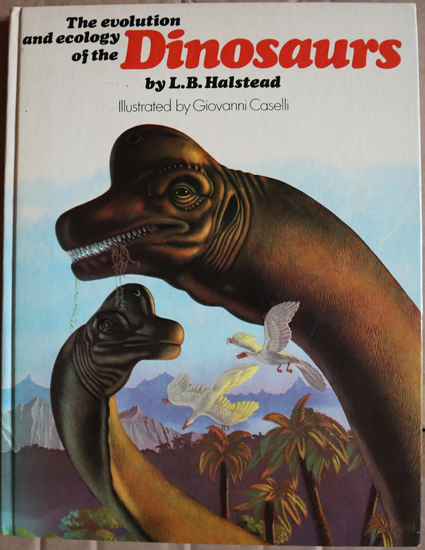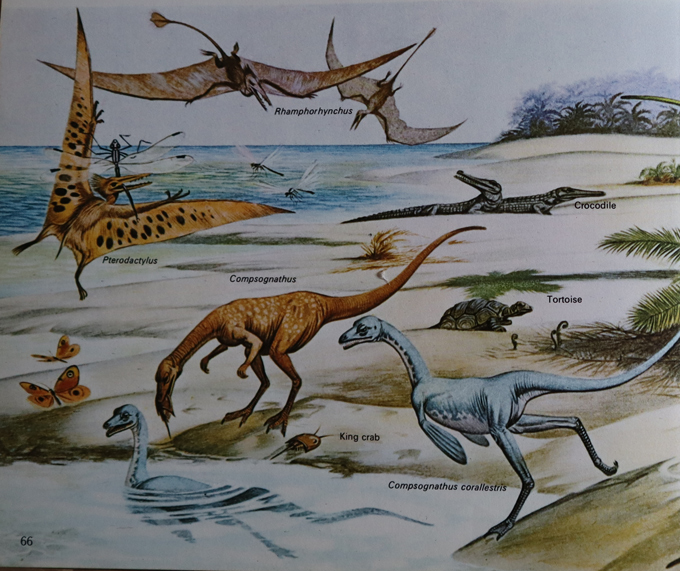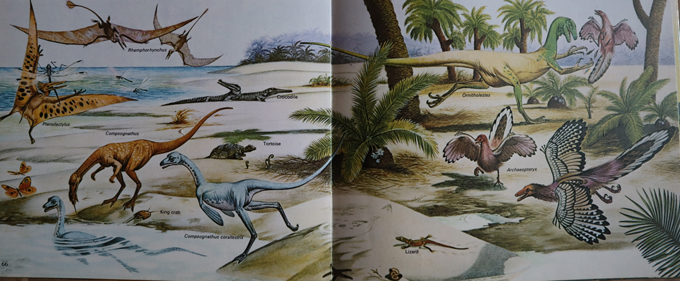The Solnhofen Lagerstätte
Whilst looking for some information related to Triassic archosaurs, we came across a copy of a dinosaur book that was published forty-four years ago (1976). Entitled “The evolution and ecology of the Dinosaurs”, this publication and the way it depicts the Dinosauria and their relatives might be very much out of date these days, but perusing the pages with their beautiful illustrations is still a very worthwhile activity.
The Front Cover of “The evolution and ecology of the Dinosaurs”

Picture credit: Everything Dinosaur
Written by L. B. Halstead and illustrated by Giovanni Caselli, this dinosaur book was part of the Eurobook Ltd stable and was published by Book Club Associates. We suspect that further editions were published but this is the only copy that we have in Everything Dinosaur’s library.
Five Chapters
Following a brief introduction, the book takes the reader through the evolution of the dinosaurs with one chapter dedicated to the origin of the Reptilia and the conquest of terrestrial environments. A second chapter defines dinosaurs and sets out the “classical” view of the dinosaur family tree complete with a skilfully designed chronology of the main types of dinosaur and how they fit into the Reptilia and in broader terms, the evolution of the subphylum Vertebrata (the vertebrates). The other three chapters are dedicated to the Triassic, Jurassic and the Cretaceous respectively.
One of the Beautiful Illustrations from the Dinosaur Book

Picture credit: Giovanni Caselli
Amazing Late Jurassic Dinosaurs
In the foreground (above), a second species of Compsognathus – C. corallestris is shown. It was thought that this theropod was adapted to a semi-aquatic existence. The first fossils associated with Compsognathus were found in southern Germany in the 19th century. A second, larger specimen associated with this genus was found in a lithographic limestone quarry near Nice in 1971. This specimen was scientifically described and named in 1972 by Alain Bidar et al.
Although, the French specimen was found in association with lagoonal deposits and at the time it was described it was thought to be a separate species, C. corallestris is now thought to be a junior synonym of Compsognathus longiceps and most palaeontologists think that there is just one species associated with this genus.
The Complete Illustration of a Jurassic Lagoon from the Dinosaur Book

Picture credit: Everything Dinosaur
It was a pleasant experience to take a few minutes out of our busy day to take a trip down memory lane with this book about dinosaurs.
For another pleasant experience, visit the Everything Dinosaur website: Everything Dinosaur.






Leave A Comment